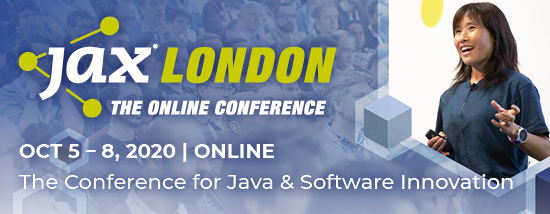By 2027, the global Internet of Things (IoT) market could top $1.4 trillion (up from $250.72 billion in 2019). As businesses and government agencies continue to fight the COVID-19 pandemic, they turn to IoT to enforce social distancing measures, ensure equipment availability, and automate tasks previously performed by humans.
In this article, we’ll take a closer look at the economic and social factors shaping the Internet of Things market this year and identify IoT trends for 2021.
SEE ALSO: Keeping up in real-time: Ensuring reliability across streaming and IoT applications
Top Three Factors Fueling the Internet of Things Adoption
- The growing availability of cloud platforms and services. Cloud computing plays a pivotal role in IoT development since all the data captured by sensing devices ends up in the cloud, where it is stored, analyzed and presented in a format suitable for further interpretation by human workers. The leading cloud providers, such as Amazon, Microsoft and Google, continuously unveil new services that make it easier for companies to jump on the IoT bandwagon. One of these novel services is AWS IoT SiteWise, which allows manufacturing companies to extract sensor data from industrial equipment, unify its format, and uncover inefficiencies in production operations. Another example comes from AT&T and Microsoft. The two companies combined AT&T’s global cellular networks with Microsoft Azure Sphere to help customers securely connect to the cloud and protect corporate IT infrastructures from cybercriminals.
- Significant advancements in edge computing. A new generation of inexpensive yet powerful CPUs, as well as ubiquitous connectivity, are making edge computing a viable reality for companies undergoing IoT transformation. By 2023, 50 percent of large enterprises are expected to deploy at least six edge computing solutions for the Internet of Things. In 2025, 75 percent of data produced by connected devices will be analyzed outside of the cloud and on-premises data centers.
- Inevitable 5G rollouts. Although the pandemic and subsequent supply chain disruptions have postponed many 5G projects, major telecom companies like Verizon and Rakuten are slowly but surely upgrading their network infrastructures to support advanced cellular connectivity. By 2025, 5G connections could surpass 1.5 billion, while 44 percent of network operators’ revenue will be coming from 4G subscribers migrating to 5G networks. With 5G, it will be possible to simultaneously connect millions of devices to the Internet and transmit sensor data faster — on the factory floor, at hospitals and in smart cities.
The Internet of Things Market Trends to Watch for in 2021
The Internet of Behaviors (IoB) Goes Mainstream
According to Gartner, more companies will turn to the Internet of Behaviors next year to identify employees neglecting social distancing rules, capture customer data, and, ultimately, optimize their marketing and sales strategies. The IoB concept involves collecting “smart dust” — i.e., geolocation data, device usage data, and biometrics. When connected to certain behaviors, such as purchases or content streaming, this data can help businesses deliver the right message to the right audience and at the right time. The technologies supporting companies’ shift to IoB include multiple Artificial Intelligence subsets, such as facial recognition and computer vision. By 2025, half of the world’s population could be subject to at least one IoB program.
IoT Devices Get Smarter with AI
The number of IoT devices is on track to reach 41.6 billion units in less than five years. These devices will be generating 79.4 zettabytes of data annually — and all this data cannot be possibly reviewed and analyzed by humans. As a result, more companies are turning to Artificial Intelligence (AI) to automate data analytics and scavenge additional insights from raw data that would otherwise get lost. It is estimated that 80 percent of enterprise IoT deployments will contain an AI component by 2022. That being said, only 53 percent of AI projects make it from pilot to production. To implement the Artificial Intelligence of Things (AIoT) solutions at scale, companies will need qualified DevOps, DataOps and ModelOps resources — and a major shift in organizational culture.
SEE ALSO: IoT and cloud: handling data storage issues
Edge Computing Infiltrates IoT
Edge computing is a distributed computing paradigm that revolves around processing data closer to where it is produced. While cloud servers still possess more storage space and computing power to analyze sensor data, many IoT deployments (think autonomous vehicles, surveillance cameras and medical equipment) cannot possibly wait for a server’s response to hit the brakes or give a dying patient an insulin injection. What’s more, not all of the data produced by connected devices should be acted on immediately. A smart oil rig, for instance, may use up to 30,000 sensors to detect and control anomalies; yet only 1 percent of sensor data requires immediate action. Enhanced with novel chips and processors like Intel’s Celeron N and Atom x6000E Series, the new generation of IoT devices will be able to detect intruders in live video data, control mission-critical equipment, and evaluate employee’s well-being — but not without AI’s help.
The Medical IoT is in Full Swing
The global pandemic has given a long-awaited boost to healthcare technology — namely, telehealth and remote patient monitoring (RPM) systems. Across the globe, hospitals and insurance companies are using sensor data produced by wearable devices to monitor patients’ heart rate, glucose and oxygen levels, and physical activity, and conduct routine checkups via video calls to free up physicians’ time and prevent mass gatherings. Other forms of IoT devices getting traction in the healthcare sector include pill dispensers, point-of-care (PoS) solutions, and iBeacon or RFID-based asset tracking systems. But with innovation comes greater responsibility. In 2021, more wearable devices that previously fell into the wellness category could end up on the FDA’s radar. Consumer electronics companies will have to make sure their devices generate data in a unified format, interface with other components of an IoT system, and are resilient to cyberattacks.
The future of IoT is trending toward large-scale growth over the next several years. However, 2021 has the potential to be a pivotal year for the IoT Market as it aims to tackle major global social and economic issues associated with the pandemic. Continued advancements of IoB, AI and Medical IoT are predicted to make a big play in 2021. These trends position the IoT market as a strong contributor in the continued fight against COVID-19.
The post A Look at the Top IoT Market Trends for 2021 appeared first on JAXenter.
Source : JAXenter



















